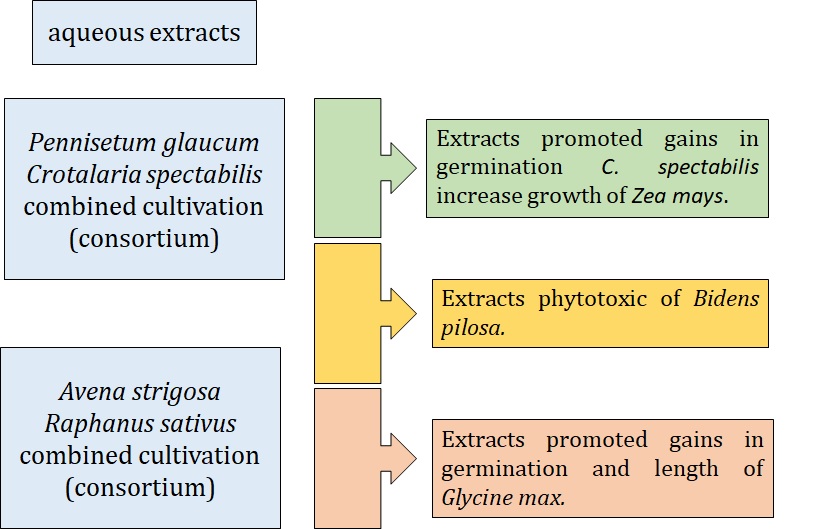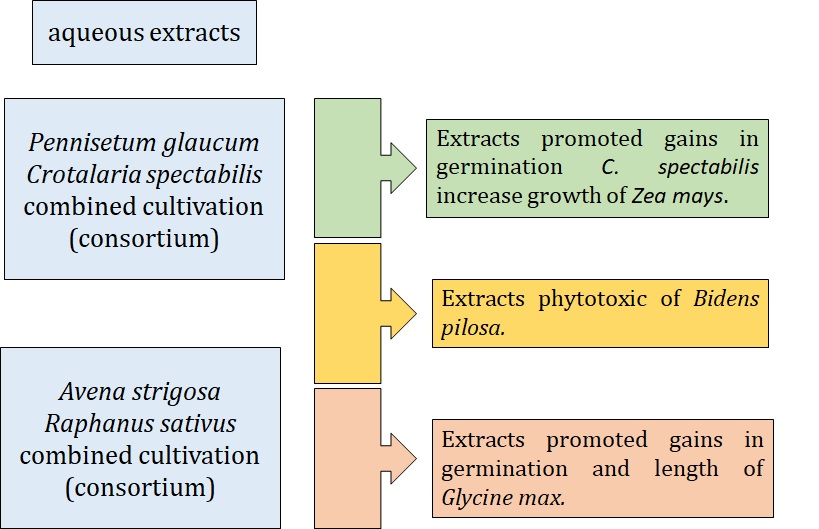Effect of forage aqueous extracts on Glycine max L. Merr., Zea mays L. and Bidens pilosa L.
DOI:
https://doi.org/10.48162/rev.39.066Keywords:
allelopathy, stimulating effect, weed suppressionAbstract

The aim of the present study was to investigate the potential allelopathic effects of isolated or intercropped aqueous forage extracts on the physiological performance of soybean [Glycine max (L.) Merr.] and corn (Zea mays L.) seeds, as well as their phytotoxicity to the weed species Bidens pilosa L. Aqueous extracts were prepared at a concentration of 5%, and the tests with soy and corn were conducted by wetting the germination papers with different treatments and performing procedures within the standards of the Brazilian Rules of Seed Analysis. Tests with the cover plant extracts on the seeds of B. pilosa used BOD-type repetitions. Fifty weed seeds were placed in a gerbox with filter paper moistened with the different treatments with five repetitions. Distilled water was used as the control in all tests. Extracts of Avena strigosa Schreb and Raphanus sativus L. (radish), cultivated individually and in combination, increased the seed germination percentage (%G) and the length of soybean seedlings. Similarly, extracts of Pennisetum glaucum (L.) R.Br and Crotalaria spectabilis Roth, in individual and combined cultivation, provided gains in corn %G. Furthermore, all tested extracts suppressed germination and decreased the speed of the germination index of the hairy beggarticks when compared to the control, with the radish extract showing the greater reduction effect on the %G of the weed plant B. pilosa.
Highlights:
- The use of Crotalaria as a cover crop has a positive effect on the initial growth of corn.
- The use of black oat and forage radish intercropped had the potential to increase soybean yield.
- The use of cover crops contributes to the integrated management of weeds.
- The choice of cover plant is important for the success of crop rotation.
Downloads

Downloads
Published
How to Cite
Issue
Section
License
Copyright (c) 2018 Revista de la Facultad de Ciencias Agrarias UNCuyo

This work is licensed under a Creative Commons Attribution-NonCommercial-ShareAlike 3.0 Unported License.
Aquellos autores/as que tengan publicaciones con esta revista, aceptan las Políticas Editoriales.










.jpg)




